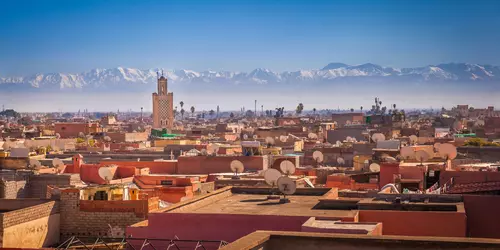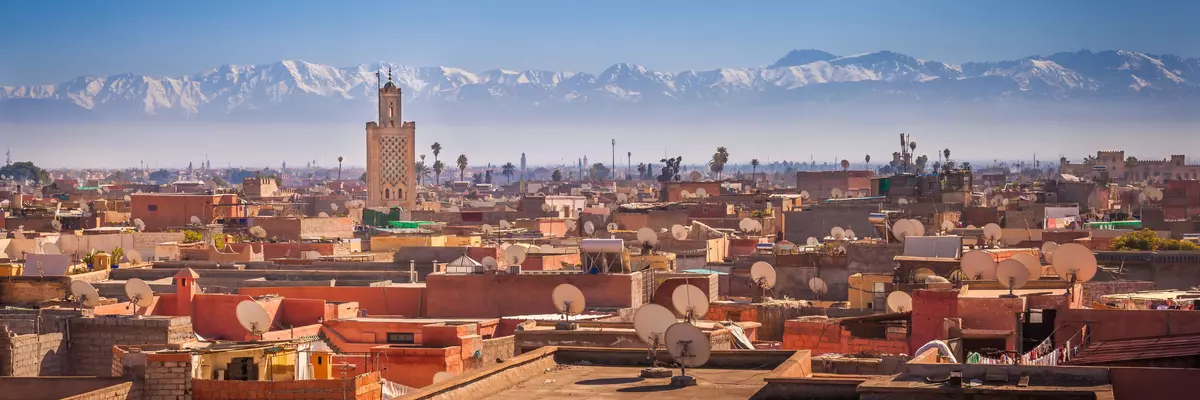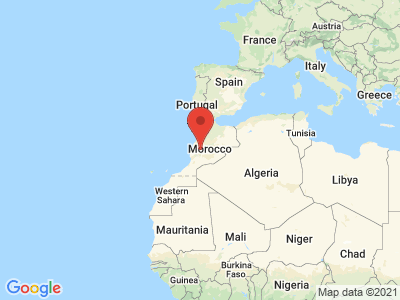Climate Table Marrakech
Jan | Feb | Mar | Apr | May | Jun | Jul | Aug | Sep | Oct | Nov | Dec | |
|---|---|---|---|---|---|---|---|---|---|---|---|---|
| Max. Temperature | 18° | 20° | 22° | 24° | 28° | 31° | 37° | 37° | 33° | 28° | 22° | 19° |
| Min. Temperature | 6° | 8° | 9° | 11° | 14° | 16° | 20° | 20° | 18° | 15° | 10° | 7° |
| Sun Hours | 7 | 7 | 8 | 9 | 9 | 11 | 11 | 10 | 9 | 8 | 7 | 7 |
| Rain Days | 4 | 4 | 4 | 4 | 2 | 1 | 0 | 0 | 2 | 3 | 4 | 4 |
The climate year of Marrakech
The Moroccan metropolis of about 920,000 inhabitants is probably the most oriental of all the major cities of the country. Above all, the marketplace Djemaa el Fna, filled with lively hustle and bustle, has long since achieved widespread fame and has also been a UNESCO World Heritage Site since 2001. Marrakech was already founded in 1070 and can therefore look back on a long and very eventful history. The city is located north of the High Atlas Mountains on a plateau about 450 meters above sea level and is protected by the mountains from climatic hardship. The name of the city comes from the Berber language and means "Land of God". In Marrakech the summers are very hot, the winters are comparatively cool, but very sunny. In the Atlas Mountains, some of which are over 4,000 meters high, the snow remains in some places even in summer.
General information about Marrakech
Marrakech belongs like Rabat, Fez and Meknès to the old royal cities, i.e. it was once the capital of the Kingdom of Morocco. This past can still be seen in its magnificent architecture. Numerous impressive sights from the royal era have been preserved, such as the Koutoubia Mosque from 1162 or the castle and fortifications, called Kasbah, from the 12th century. Also worth seeing are the ruins of the El Baadia palace. Djemaa el Fna is the central square, the heart of the city. Especially in the evening hours, people trade and haggle here, jugglers and snake charmers perform their tricks and tourists can experience the colors and smells of the Orient up close. The old town consists of labyrinthine winding alleys, where small stores and cafes line up and numerous merchants in jellabas try to attract the attention of passers-by. Islamic art is on display at the Islamic Art Museum, among other places, located in the delightful Jardin Majorelle.
Tourism Marrakech
It gets particularly hot in the summer months of July and August, when the thermometer usually measures around 29 °C, but it can get as hot as 40 °C. In addition, the humidity is very low due to the prevailing hot desert wind Scirocco. At night, it gets only slightly cooler at 25 to 26 °C. In winter it is much cooler, then the thermometer shows about 11 °C. However, especially in December and January, temperatures can also drop to 0 °C. The climate in Marrakech is very dry, with an average annual rainfall of about 250 mm.


